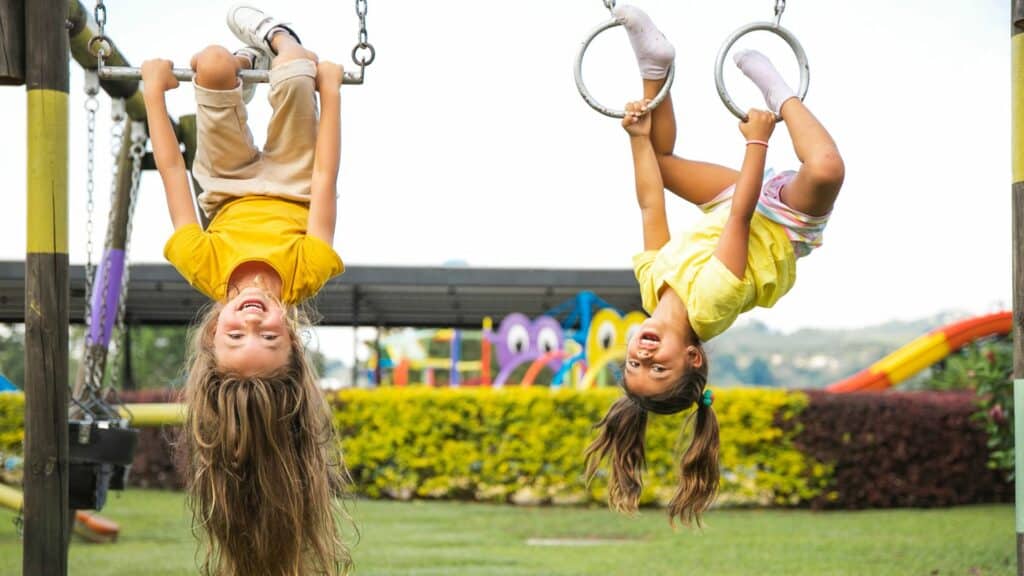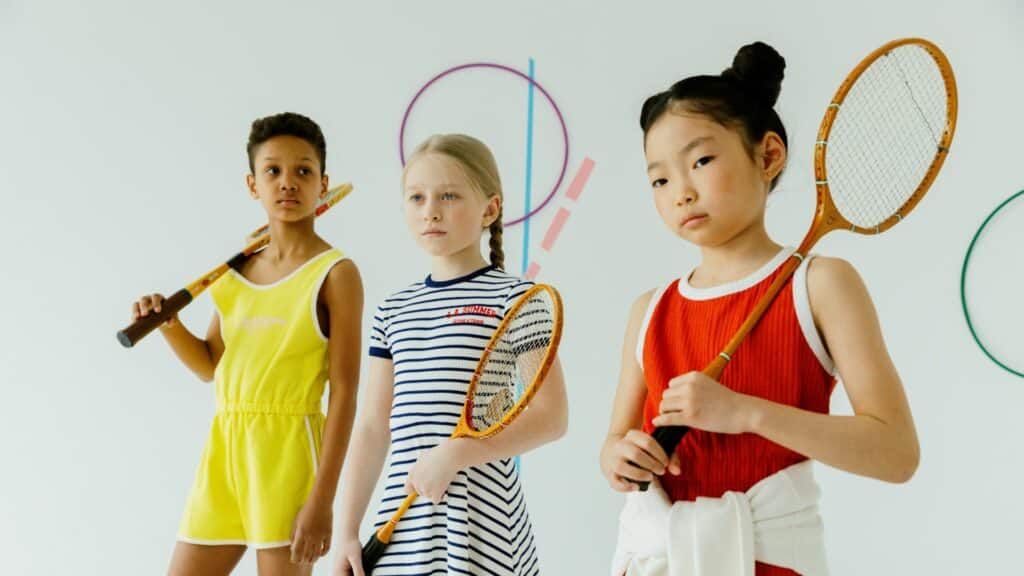Skiing for Children: At What Age and What Benefits
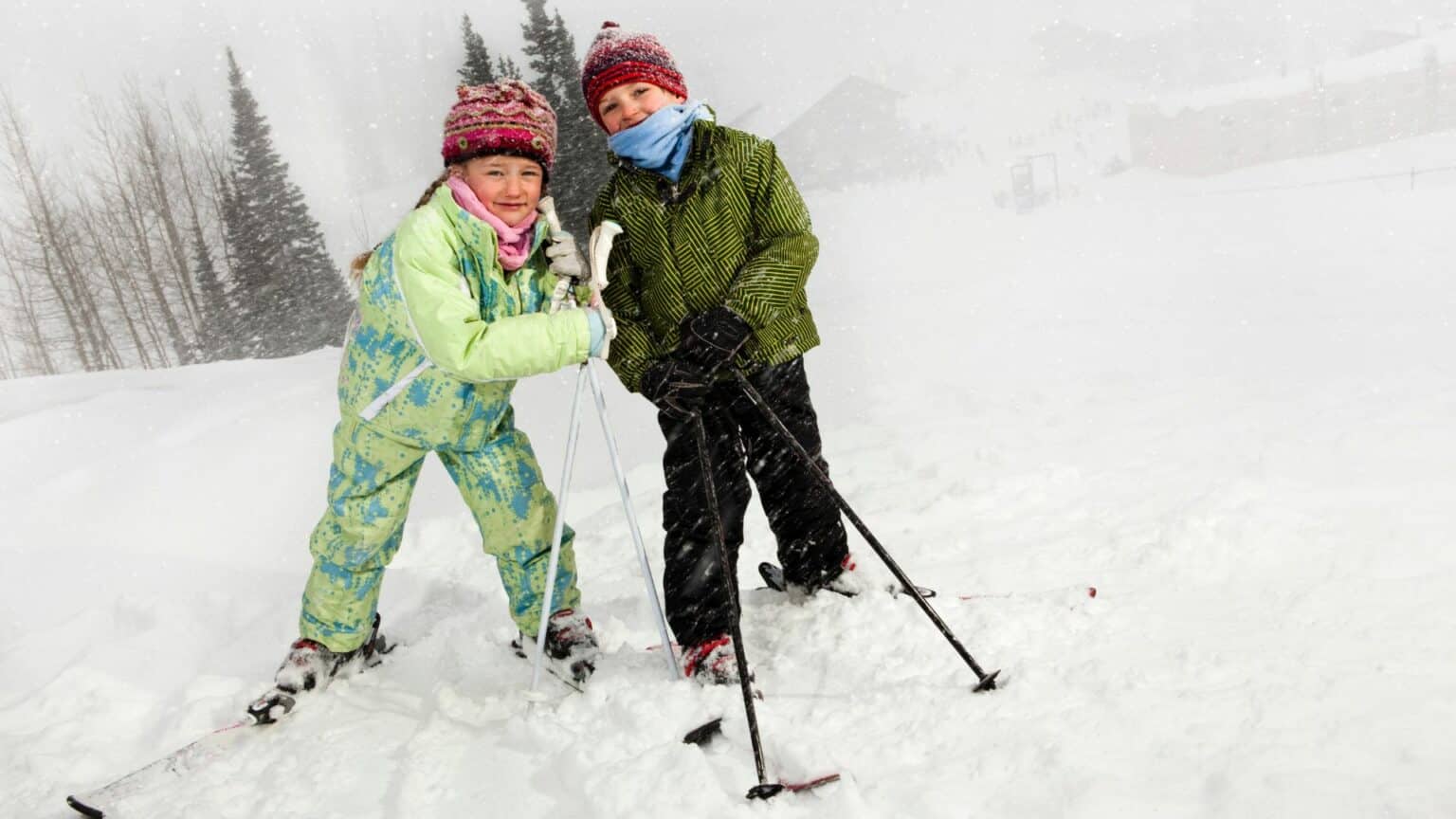
Last Updated: September 9, 2022
Skiing is not only a great way for children to stay active and enjoy the outdoors, but it also comes with a host of benefits that can help them develop physically, mentally, and emotionally.
Here are just a few of the ways that skiing can benefit children:
Physical Benefits — Skiing is excellent exercise for both the body and mind. It requires coordination, balance, and strength, all of which can help to improve physical fitness. And because it’s so enjoyable, kids are more likely to stick with it, making it a great way to combat childhood obesity.
Mental Benefits — In addition to the physical benefits, skiing can also enhance mental development in children. The sport requires concentration and focus, which can help kids learn how to better direct their attention. Plus, being out in nature has been shown to have positive effects on mental health overall.
Emotional Benefits — Skiing can also promote emotional well-being in children. The sense of achievement that comes from learning a new skill or mastering a difficult run can boost self-confidence and self-esteem. And spending time with family or friends while enjoying the beauty of the outdoors can create lasting memories and bonds.
Most importantly, skiing is a great way for kids to stay active. It requires coordination, balance and stamina – all things that are important for growing bodies. And because it’s so enjoyable, it doesn’t feel like exercise!
There are many different ways to ski, from gentle slopes perfect for beginners to more challenging runs for advanced skiers. As children progress and become more confident on their skis, they can try different types of skiing – from moguls to powder skiing – giving them a sense of achievement as they learn new skills. Skiing is also a great workout for the whole body, including the legs, core and arms.
Another benefit of skiing is that it encourages kids to be outdoors in nature. In today’s digital world, it’s important for children to spend time disconnecting from technology and enjoying the fresh air and beauty of the natural environment. Skiing is the perfect activity to help kids do this while still having fun.
So what are you waiting for? If you haven’t already introduced your children to skiing, now is the perfect time! They’ll love experiencing all the benefits that this fantastic sport has to offer.
Is there an appropriate age to start ski lessons or take up skiing?
Skiing is a fabulous way to spend time with family and friends, enjoy the great outdoors, and get some exercise all at the same time. But what’s the appropriate age to start ski lessons or take up skiing?
Starting ski lessons at an early age has a number of benefits. Firstly, it gives children a head start in learning the basic skills and techniques required for skiing. Secondly, it helps to instill a love and enjoyment for the sport from a young age. And lastly, it means that children can progress onto more difficult slopes sooner – making the most of their time on the slopes!
First and foremost, it’s important to consider your child’s maturity level and physical abilities. Skiing requires a certain amount of coordination and balance, so if your child is still fairly uncoordinated, they might not be ready just yet. It’s also important to think about whether or not your child has the attention span required for skiing – after all, it’s not exactly a fast-paced activity. If you think your child might get bored easily or has trouble following instructions, they might not be quite ready for skiing either.
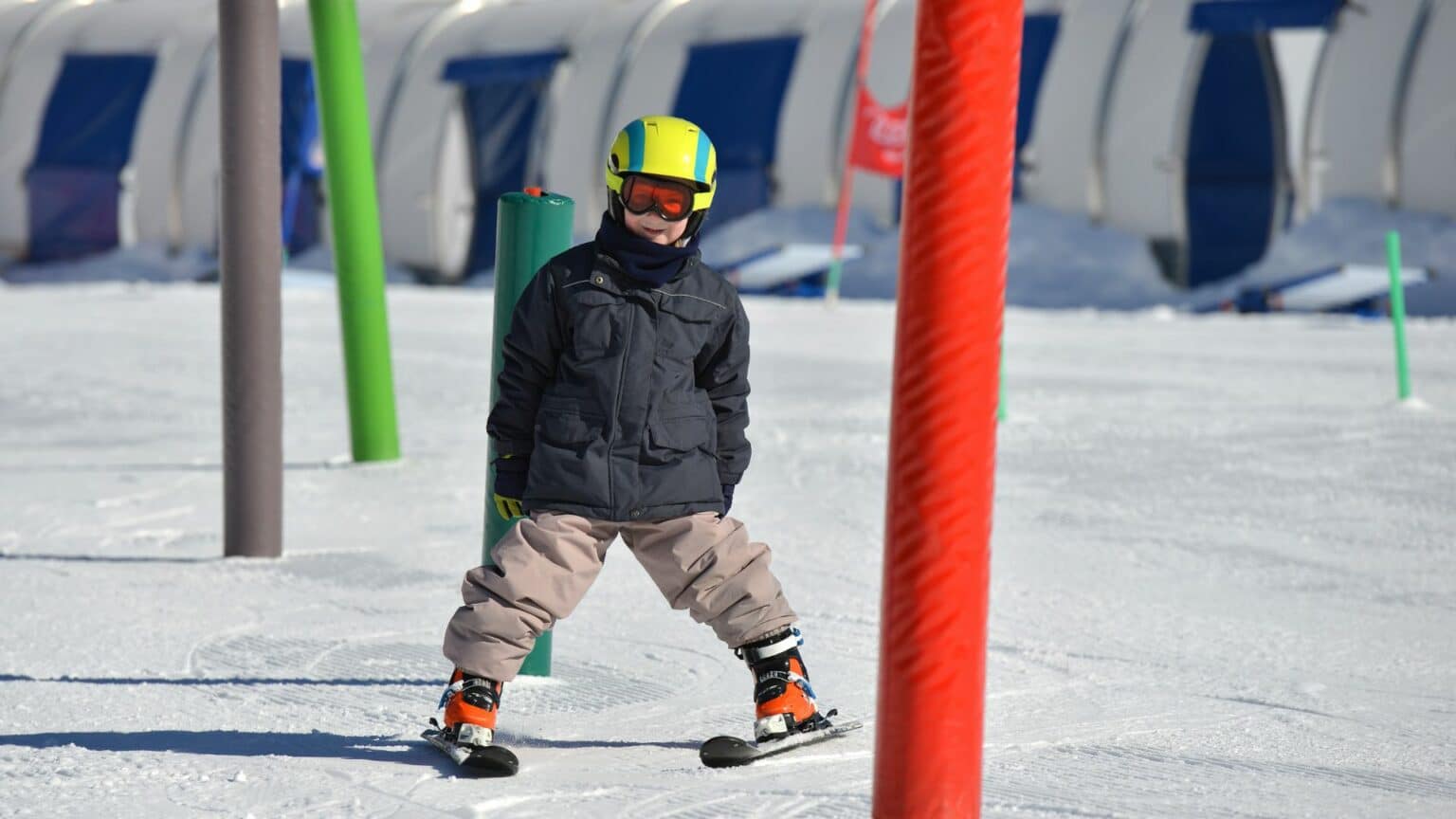
Assuming your child meets the basic requirements in terms of physical ability and attention span, the next thing to consider is their personality. Some kids are naturally more adventurous than others and will take to skiing like a duck to water. Others may be more hesitant and need a little more encouragement (and maybe even bribery!) before they’re willing to give it a try. There’s no ‘right’ age to start – it’s ultimately down to the individual child and their personality.
Assuming we’re talking about Alpine skiing here, most ski schools will take children from around 3 or 4 years old. This is because they need to be able to understand and follow simple instructions, and be confident enough to stand up on skis by themselves. However, some younger children may have the maturity and ability to do this earlier than others. It really depends on the child in question.
Older children and adults who are thinking about taking up skiing for the first time may find that they enjoy it just as much as (if not more than) younger beginners. There are plenty of beginner-friendly ski resorts out there that cater specifically for those who are new to the sport. And once you’ve got a few lessons under your belt and start feeling more confident on your skis, you can always move onto somewhere that’s more challenging if you want to.
So, there is no definitive answer when it comes to how old someone should be before they start learning to ski or take up skiing as a hobby. Ultimately, it all comes down to the individual concerned and what they feel comfortable with. Some people may be perfectly happy skiing from a very young age, while others may prefer to wait until they’re a little older and more confident on their feet before hitting the slopes.
What equipment do you need to ski?
Skiing is a great way to enjoy the outdoors, get some exercise, and spend time with family and friends. But before you hit the slopes, you need to make sure you have the proper equipment. Here’s a rundown of what you’ll need to get started:
First, of course, you’ll need skis. If you’re just starting out, it’s a good idea to rent skis so that you can find the right size and type for your height and skiing style. Once you’ve decided on the right pair of skis, be sure to get them fitted with bindings at a ski shop. The bindings attach your boots to the skis and help keep your feet in place while skiing.
Next up are ski boots. Again, if you’re just starting out it’s best to rent boots so that you can try on different sizes and styles until you find what’s comfortable for you. Ski boots should fit snugly but not be too tight — they should be comfortable enough to wear all day without giving you blisters or sore feet.
Once you have your skis and boots sorted out, it’s time to think about poles (also called «ski sticks»). Poles are generally made of aluminum or composite materials, and they come in different lengths to suit skiers of different heights. In general, the poles should be about shoulder-height when you’re standing on them with the tips touching the ground.
If you’re just starting out, it’s a good idea to rent poles from the ski shop rather than buying your own. That way, you can try out different types and sizes until you find what suits you best.
As for clothing, there are a few essentials that will help you enjoy your day on the slopes:
Waterproof jacket and trousers: A good ski jacket will keep you warm and dry even if you fall in the snow or get caught in a winter storm. Ski pants (or salopettes) are also essential — make sure they fit well over your boots and under your jacket so that no cold air can get in. You might want to consider investing in a pair of Gore-Tex or another type of waterproof/breathable fabric to keep yourself comfortable while skiing.
Thermal underwear: This is vital for keeping warm — choose a light top and bottoms made from synthetic fabrics such as merino wool or polypropylene. Avoid cotton as it will absorb moisture and make you cold.
Ski socks: Thick, padded ski socks are a must — again, wool or synthetic materials are best. Make sure they’re comfortable as you’ll be wearing them all day!
Helmet: A helmet is essential for safety — choose one that’s comfortable and well-ventilated.
Goggles: Goggles protect your eyes from the sun, wind and snow. Choose a pair with 100% UV protection and an anti-fog coating.
Gloves or mittens: Gloves or mittens will keep your hands warm — look for waterproof ones with insulation if it’s going to be cold. Ski gloves often have grip pads on the palms to help you hold onto your poles. A hat or helmet will keep your head and ears warm, and goggles will protect your eyes from snow and glare. A neck gaiter or scarf can also be helpful in keeping the cold out.
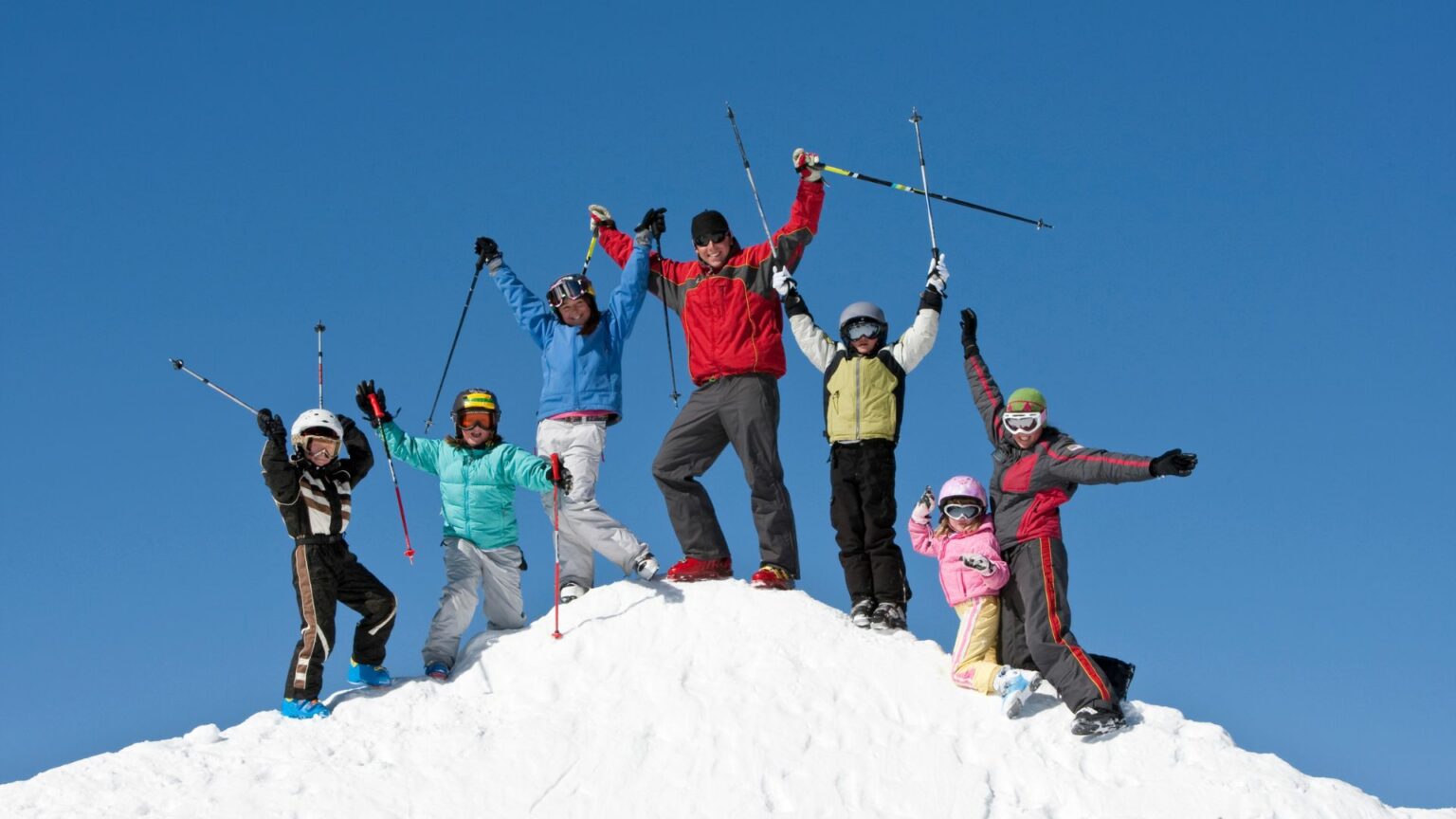
Ski pants should be waterproof and windproof, with taped seams to prevent moisture from seeping in. Many styles have suspenders for a better fit, as well as zippered vents that you can open if you start to feel too warm. A jacket should offer the same protection as your pants — look for one that’s also breathable so you don’t overheat while skiing. Again, zippered vents can be helpful here.
Layering is key to staying comfortable while skiing — start with a base layer of synthetic fabric next to your skin, followed by a mid-layer of insulation (fleece is a good choice) and topped off with a waterproof outer layer. You may want to consider investing in a pair of ski-specific socks, which are designed to fit snugly inside your boots and wick away sweat. Footwear is obviously an important part of your ski gear — alpine skiing boots should be snug but not too tight, with enough room to wiggle your toes. Snowboard boots are a little different — they’re designed to give you more flexibility and freedom of movement while still providing support.
What kind of skis do kids' sizes have?
When it comes to skis, there are many different types and sizes that you can choose from. Depending on your child’s age, weight, and skiing ability, the type of ski they need will vary. In general, however, most children’s skis will fall into one of two categories: Alpine skis or Nordic skis.
Alpine skis are the most common type of ski and are what most people think of when they think of skiing in general. These skis are designed for downhill skiing and can be used on both groomed trails and in off-piste powdery conditions. Alpine skis come in a variety of lengths and widths, but kids’ sizes will typically be shorter and narrower than adult sizes to accommodate their smaller frames.
Nordic skis are a bit different than alpine skis in that they are designed specifically for cross-country skiing. Unlike alpine skis, which have metal edges to help grip the snow, Nordic skis have a waxable base that allows them to glide smoothly over the snow. Nordic skis also tend to be lighter than alpine skis so that they don’t tiresome the user as much during long cross-country treks.
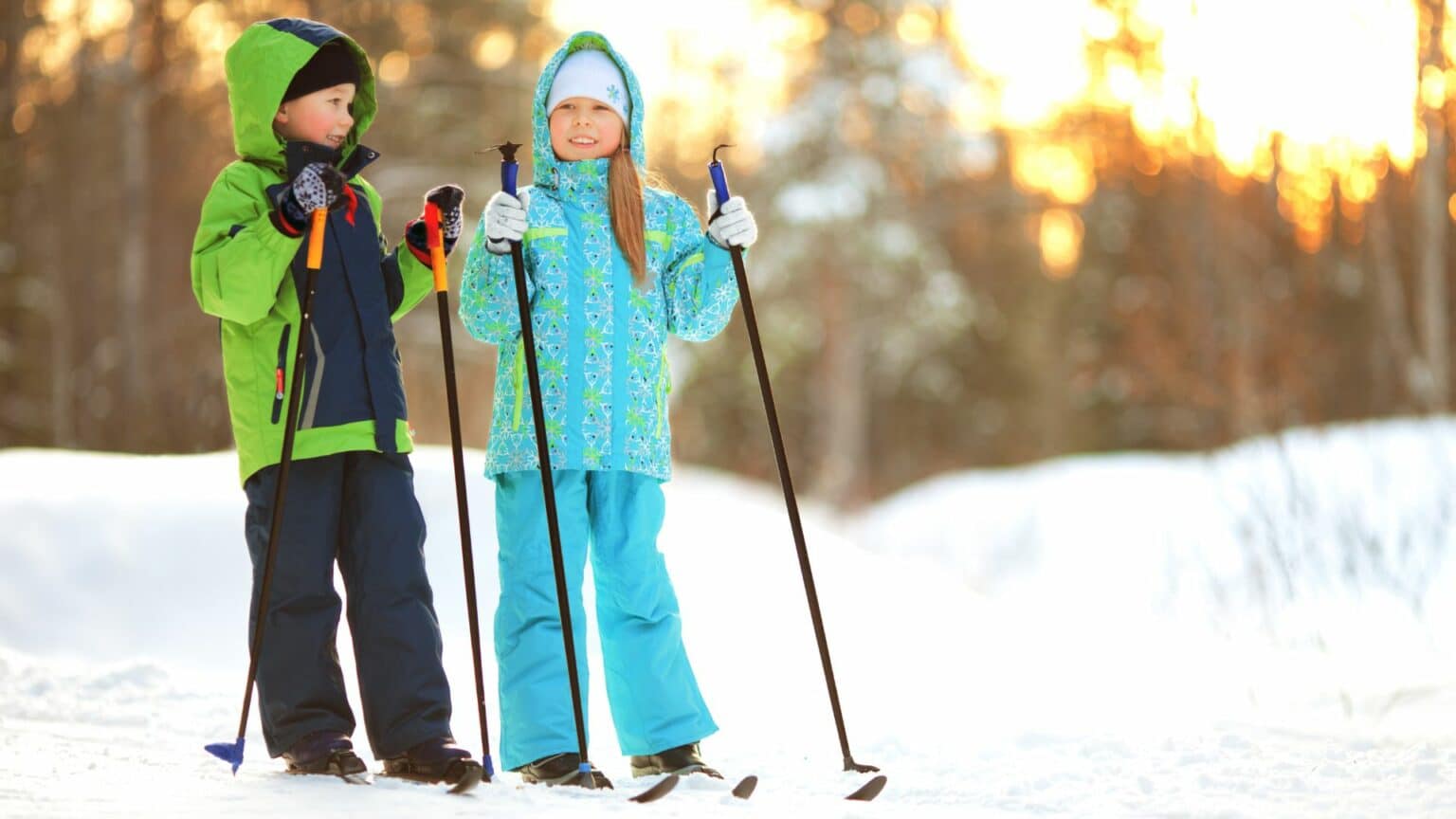
When it comes to alpine skis, there are three main types that correspond to different abilities and preferences: carving, all-mountain, and powder. Carving skis are designed for making clean turns on groomed slopes at high speeds. They have a narrow width underfoot, which improves their edge grip on hard snow. All-mountain skis are versatile enough to be used in a variety of conditions, including off-trail Powder skishave a wider width underfoot than either carving or all-mountain skis in order to float better on deep powder snow.
Most powder skis have a waist width of at least 90 mm. Some companies make very wide “fat” skis with widths exceeding 130 mm. These extremely wide skis are designed for use in deep, ungroomed powder conditions and provide the utmost flotation. Do you need a powder ski? It depends on where you ski.
If you primarily ski groomed trails Powder skis can help you enjoy fresh snowfall days, but they will be overkill the rest of the time because they are significantly wider than carving or all-mountain skis making them more difficult to maneuver on groomed snow and ice. In addition, most powder skis do not have the sidecut radius necessary for carving turns so they will require a different skiing technique employing a more angled stance and shorter turns.
Another important factor to consider when choosing kids’ skis is size. Skis for kids come in a range of sizes, from 80 cm all the way up to 140 cm. It’s important to choose a pair of skis that’s the right length for your child’s height — if they’re too long, they’ll be difficult to control; too short, and they won’t be able to get enough speed going down the slopes.
Finally, don’t forget about bindings! If your child is just starting out, it’s important to get bindings that are easily adjustable so you can make sure they’re always in the correct position. With all of these factors in mind, you should be able to find the perfect pair of skis for your child!
Where are best holiday ski pistes for children?
There is nothing quite like spending a winter vacation on the slopes with your family. And if you have young children, you want to make sure they are skiing on the best beginner ski pistes around. Here are five of the best places to take your kiddos skiing this year:
1. Park City, Utah — Park City has long been a favorite destination for skiers and snowboarders of all levels, but it is especially great for beginners. There are three separate areas within Park City that are perfect for beginners: Deer Valley Resort, The Canyons, and Park City Mountain Resort. At each of these resorts, you’ll find gentle slopes, helpful instructors, and plenty of other families just like yours.
2. Beaver Creek, Colorado — Another fantastic resort town for beginners is Beaver Creek in Colorado. This town is home to Beaver Creek Resort which offers a world-class ski school specifically for kids ages 3-12. In addition to the excellent instruction your kids will receive at Beaver Creek, they’ll also love playing in the snow in one of the many kid-friendly areas throughout the resort.
3. Whistler Blackcomb, British Columbia — If you’re looking to take your family on an epic ski vacation, Whistler Blackcomb is the place to go. With over 200 trails and 8000 acres of skiable terrain, there’s something for everyone here. And, thanks to the Kids Adventure Zones scattered throughout the resort, your little ones will have a blast too.
4. Big White Ski Resort, British Columbia — Big White is another great option for families looking to hit the slopes together. The resort boasts kid-friendly amenities like a family friendly center with daycare services and a tubing park that’s perfect for little ones.
5. Mont Tremblant, Quebec — Mont Tremblant is a popular destination for families looking to enjoy some winter fun together. The resort offers ski lessons for all levels, as well as plenty of other activities that both kids and adults will enjoy.
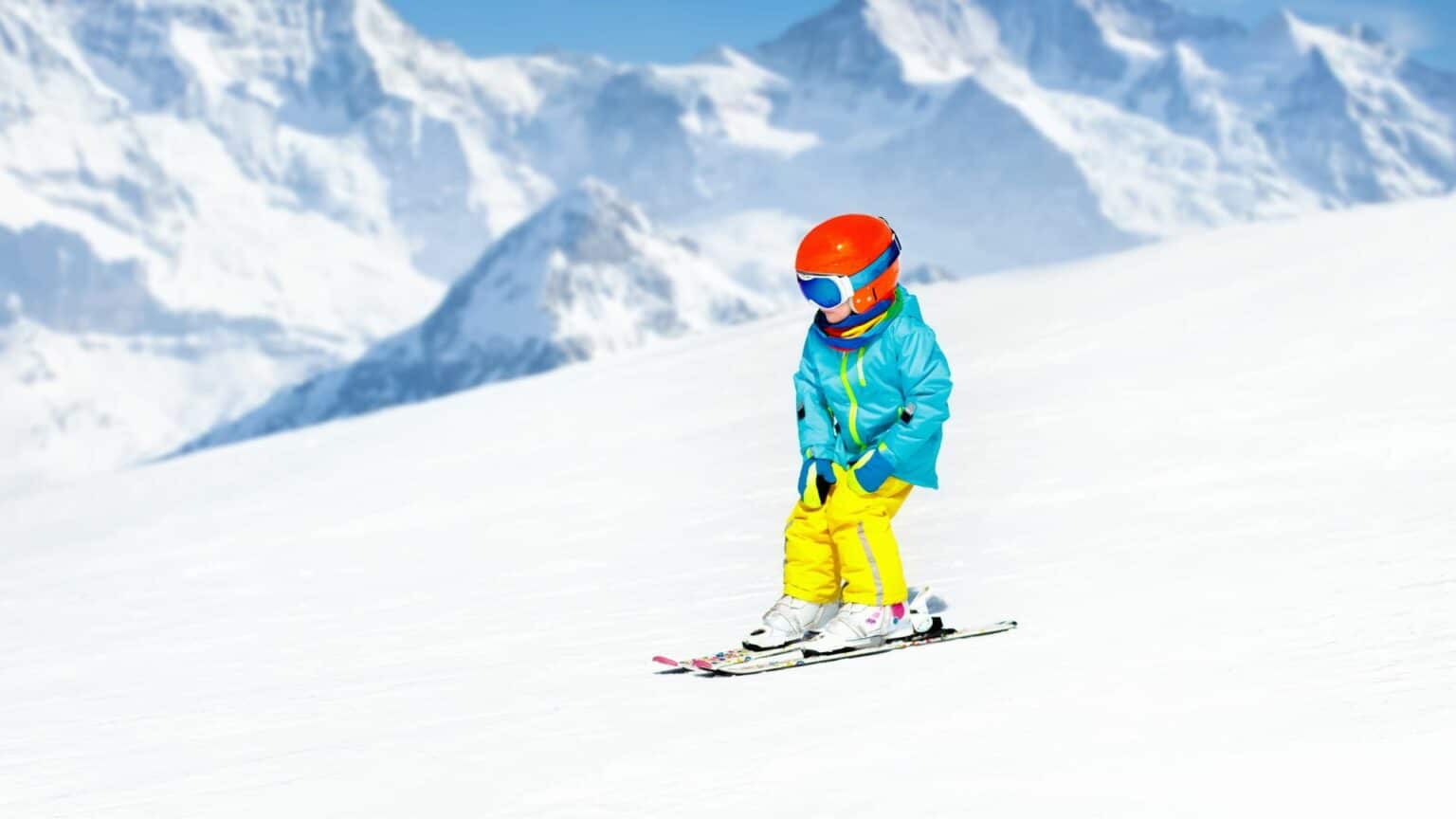
If you’re looking for a fantastic family-friendly ski destination, look no further than Les Gets in the French Alps. This charming resort is perfect for families with young children, as it offers gentle slopes and beginner-friendly ski lessons. There are also plenty of other activities on offer, from tobogganing and snowshoeing to ice skating and sledging. So, whether your kids are total beginners or experienced skiers, they’ll be able to find something to enjoy in Les Gets.
Another great option for families is Avoriaz in France. This purpose-built resort is situated right in the heart of the Portes du Soleil ski area, making it an ideal base for exploring all that this massive skiing region has to offer. Avoriaz is also home to a great selection of childcare facilities and kindergartens, so you can rest assured that your little ones will be well looked after while you hit the slopes.
Another fantastic option is Italy’s Livigno – not only does it boast over 110km of pistes (including 35km of easy and beginner runs), but it also has a special kids’ ski area called Mottolino with its ownmagic carpet and mini-sledge runs.
Or how about Germany’s Winterberg? This is a great resort for families as not only does it have over 50km of family-friendly pistes, but there are also tobogganing and bobsleighing tracks, an indoor swimming pool, plus plenty of other activities on offer in the town.
If you’re looking for a budget option, try Bulgaria’s Borovets. It might not have the same choice of slopes as some of the larger resorts, but it’s perfect if you’re just starting out – plus lift passes are cheap and there are some good discounts to be had if you book your accommodation in advance.
Is it safe to ski as a child?
Yes, skiing is definitely a safe activity for children! As long as they are properly supervised and have the proper safety gear, there is no reason why they can’t enjoy this fantastic winter sport.
Of course, like with any activity, there are always some risks involved. But as long as you take the necessary precautions, you can help reduce these risks and make sure your child has a fun and safe time on the slopes.
Skiing is a great way to get outside and enjoy the winter scenery, but it’s important to be safe while doing it. Here are some tips on how to ski safely as a child:
1. Wear the right gear. Make sure you have all the proper gear before hitting the slopes. This includes a good pair of skis, poles, boots, and clothing that will keep you warm and dry.
2. Don’t go off-piste without supervision. If you want to explore beyond the groomed trails, make sure you have an experienced adult with you who knows the area well.
3. Be aware of your surroundings at all times. When skiing, always be aware of what’s going on around you – both on and off the slopes. This includes paying attention to other skiers, obstacles in your path, and changes in terrain or weather conditions.
4. Start slow and work your way up. If you’re new to skiing, don’t try to tackle difficult runs right away – start slow on easier trails and gradually work your way up as your skills improve. And always wear a helmet – it could save your life.
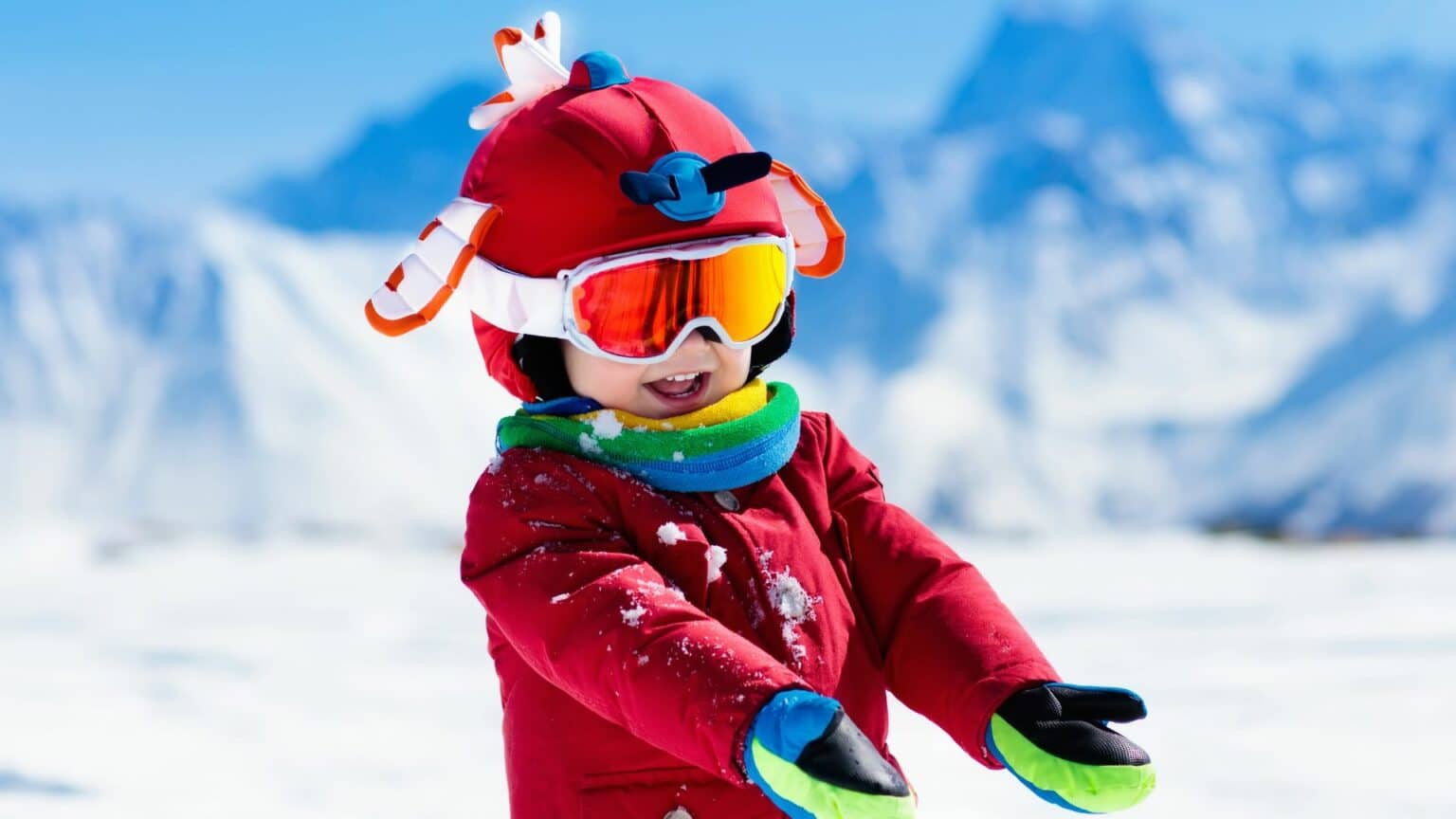
Most ski accidents happen when skiers are going too fast for their abilities or for the conditions of the slope they’re on. To avoid accidents, always Ski Within Your Limits and never try to keep up with people who are more experienced than you are. It’s also important to know how to stop safely in case you need to suddenly slow down or come to a stop. Practice stopping on an easy slope before you attempt it on a more difficult one.
Wearing the proper clothing is also crucial for safety while skiing. Make sure you dress in layers so you can stay warm but not overheat, and wear sunscreen even if it doesn’t seem sunny outside – the sun reflecting off the snow can cause sunburns even on cloudy days. Also, be sure to have well-fitting ski gear, including a helmet that’s properly sized for your head.
Most importantly, though, is to Ski with a friend or family member – never go off on your own! And if you need help, don’t be afraid to ask one of the friendly adults on the slopes.
If you follow these basic safety precautions, then skiing can be a safe and enjoyable activity for children of all ages.
What is the appropriate style of ski for my child?
With so many different types of skis on the market, it can be tough to decide which ones are right for your child. But don’t fret — we’re here to help! We’ll break down the different types of skis and what each is best suited for, so you can make an informed decision on which style of ski is right for your little one.
First things first — let’s talk about junior skis. Junior skis are designed specifically for young children and are shorter and lighter than adult skis. They’re also generally easier to turn, making them a great choice for beginners or kids who are still getting the hang of skiing. If your child is just starting out, we recommend renting junior skis from a local ski shop or resort. That way, they can try out different sizes and styles until they find the perfect match.
Now that we’ve covered junior skis, let’s move on to adult skis. There are four main types of adult ski: all-mountain, freestyle/park, carving, and powder. All-mountain skis are versatile and can be used in a variety of terrain and conditions; they’re a great choice if you’re just getting started. Freestyle/park skis are designed for skiing in the terrain park and feature a twin-tip design that makes it easier to do tricks. Carving skis are built for high-speed turns on groomed slopes and can be more difficult to control at slower speeds. Powder skis are wide and have a raised tail that helps you float in deep powder.
When choosing a ski for your child, it’s important to consider their age, ability level, and what type of skiing they’ll be doing most often. Younger children will need shorter skis that are easy to control; older kids and beginners may benefit from longer skis that offer more stability. If your child is interested in freestyle skiing or skiing in the terrain park, look for a ski with twin tips (two rounded ends). For carving or racing, choose a ski with sharp edges designed for carve turns; these can be more difficult to control at lower speeds. If you’re planning on spending most of your time skiing in deep powder, go for a wider powder ski with a raised tail.
Whatever type of ski you choose, make sure it’s properly tuned and waxed before taking it out on the slopes. Skiing is a fun and exhilarating sport that can be enjoyed by people of all ages. However, before hitting the slopes, it’s important to make sure you have the right equipment.
When choosing skis for your child, the most important factor to consider is what type of skiing they will be doing most often. If they plan on spending most of their time skiing in deep powder, go for a wider powder ski with a raised tail. This will help keep them afloat in the deeper snow. For those who prefer to stick to groomed trails, an all-mountain ski or carving ski would be a better option. These skis are narrower and designed for easier turning on packed snow.
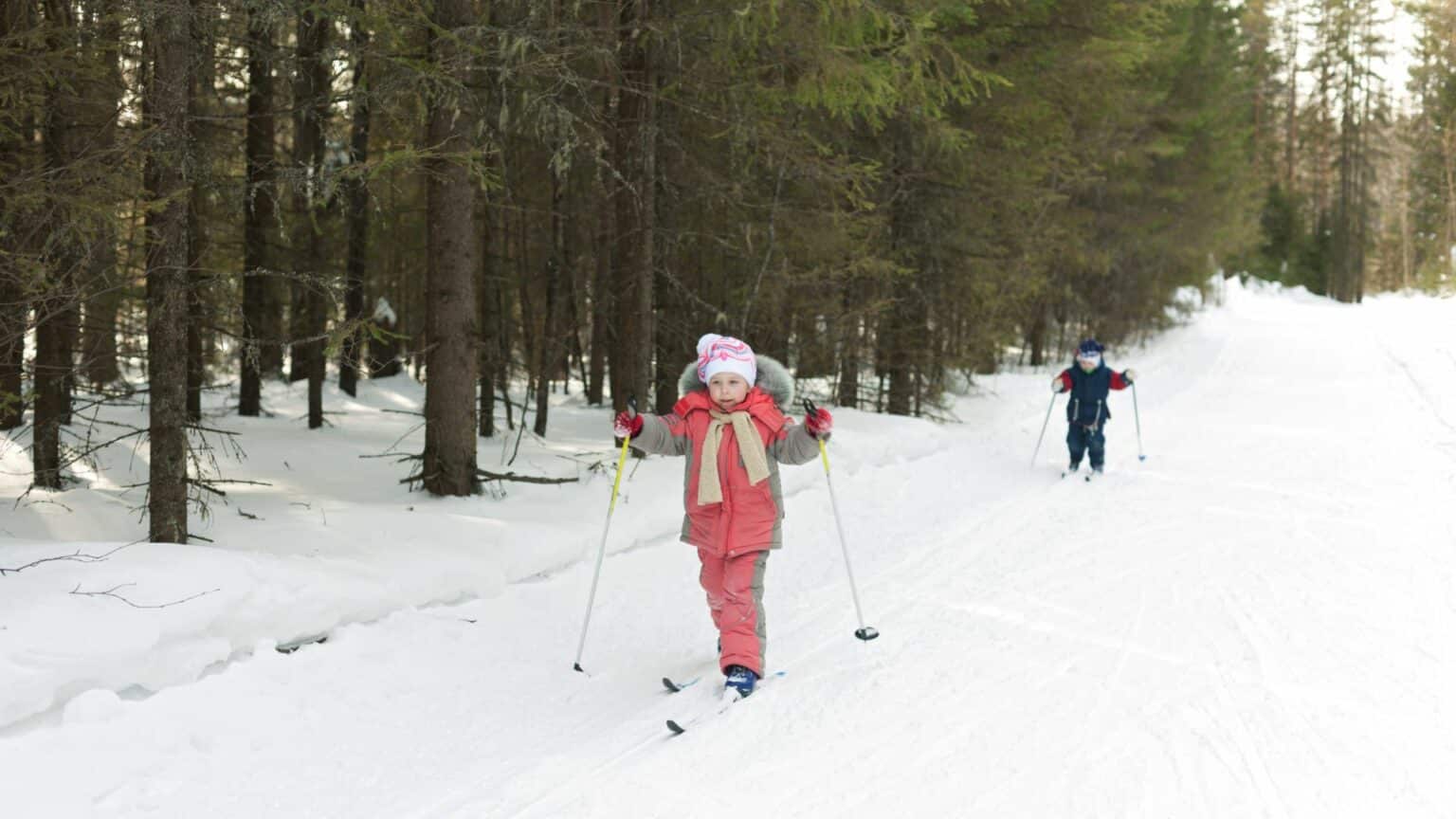
If you’re unsure what type or size of ski would be best for your child, ask a salesperson at your local sporting goods store or rental shop. They will be able to help you find the appropriate ski based on your child’s weight, height and skiing ability.
If you’re still unsure, here is a general guide to help you choose the right ski for your child:
— For beginners or those just starting out, it is best to choose a shorter length ski. This will make learning how to turn and stop much easier. Once your child has mastered the basics, you can then move up to a longer ski.
— If your child is on the heavier side, consider getting a wider ski. This will provide more stability and support while they are skiing.
— For kids who are advanced skiers or race down the slopes, you’ll want to look for a high-performance ski that is lightweight and nimble.
— All-mountain skis are a good choice for kids who are comfortable skiing on groomed trails as well as in powder.
— If your child is just starting out, you’ll want to look for a ski that is wider and more forgiving, with an easy learning curve. A good all-mountain or frontside ski is a great choice for most beginner to intermediate skiers.
— If your child is an experienced skier who enjoys skiing fast and making quick turns, you’ll want to look for a narrower, more performance-oriented ski. A carving ski or race ski is a good choice for advanced skiers.
— If your child loves skiing powder, you’ll want to look for a wider ski with plenty of floatation. An all-mountain powder ski or freeride ski is the way to go.
— If your child is into skiing the park or hitting jumps, they’ll need a ski that’s durable and flexible. A twin-tip ski with a softer flex is ideal for this type of skiing.
— If your child likes to race, you’ll want to get them a race ski that’s specifically designed for their age group and experience level.
— For all-around versatility, an all-mountain ski is always a good choice. These skis can handle any type of terrain and are perfect for exploring the entire mountain.
— For those who want to spend most of their time off piste, powder skis are the way to go. These skis float on top of deep snow and make skiing in powdery conditions much easier.
No matter what type of skiing your child wants to do, there is a specific type of ski that will suit their needs. With so many different types of ski available, it’s important to consult with a professional before making a purchase.
You Also May Like
Copyright 2026 © Top Sports For Kids
Topsportsforkids.com is a participant in the Amazon Services LLC Associates Program, an affiliate advertising program designed to provide a means for sites to earn advertising fees by advertising and linking to Amazon.com.

